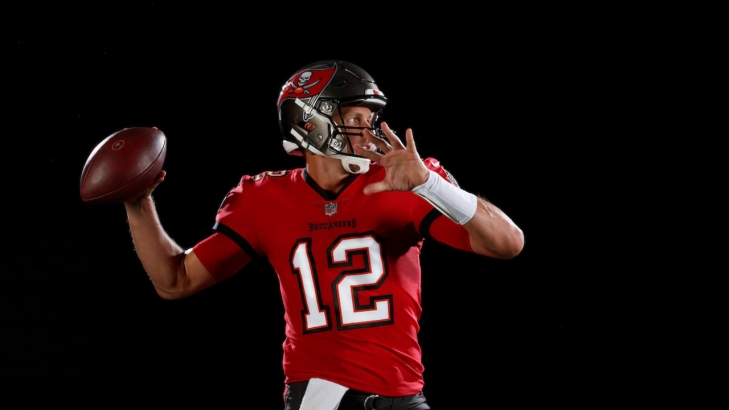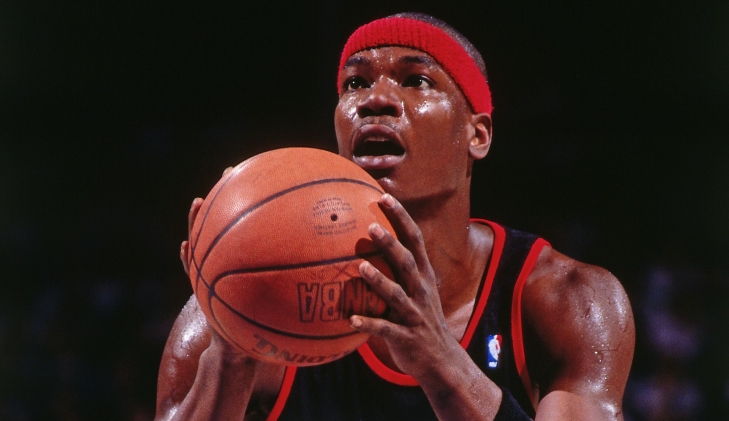
Committee Chairman
Our Preseason NFL HOF Monitor is up
Our Football Hall of Fame monitor for football looks at the following criteria:
The biggest factor we look at is how each active player measures up to the last five players at their position who were chosen. To reflect the modern era and how stats have changed, Senior Inductees will not be considered as part of the last five inductees. To keep everything simple, we are looking at Pro Bowl Selections, First Team All-Pro Selections, traditional statistics, games played and approximate value.
Obviously, there are other intangibles, such as playoff success, content of character etc. and we have adjusted where we think necessary due to those considerations.
While we don’t see this as a perfect system, these are the points that people make when determining whether or not someone is a Pro Football Hall of Famer, it does put forth a good baseline for us to work with.
The other criteria we look at is dominating seasons. We call this the Terrell Davis Rule. In Davis’ Hall of Fame resume, you see that he was an elite player for three seasons and was the difference maker aiding the Denver Broncos to win their first two Super Bowls. The induction of Davis and others with similar careers (like Gale Sayers for example) shows that the Pro Football Hall of Fame recognizes bursts of excellence over years of above average consistency. This will reflect in our ranking as a younger player who may have less accolades than a more tenured one could be ranked higher if he has more years where he was unquestionably an elite player at his position.
We also have to add the caveat that we will only qualify those who have been chosen via the Modern Era class in the last fifteen years.
For reference, here are the last five Hall of Famers for each position and we have created what we call the Modern Positional Average, the MPA:
Quarterbacks: Troy Aikman, Brett Favre, Dan Marino, Kurt Warner, Steve Young.
Note that three of these QBs (Aikman, Marino & Young) competed in the 1990’s where offensive output is not what it is today. This is one of the reasons why we are adding Super Bowls and Super Bowl appearances to offset this and since Quarterbacks are graded on that accomplishment more than all other positions combined, it seems appropriate. Please also note that while Quarterbacks are not initially thought of based on their rushing totals, more and more pivots act as a dual threat, and this helps to offset those who aid their offense as much as with their legs as they do with their arm.
200.4 Games, 175.5 Approximate Value, 0.8752 AV/G, 7.4 Pro Bowls, 2.2 First Team All-Pros, 46,122 Passing Yards, 306.6 Touchdown Passes, 1,537.6 Rushing Yards, 15.8 Rushing Touchdowns, 1.6 Super Bowls, 2.6 Super Bowl Appearances.
*Note that this is the same as last year, as no modern era Quarterbacks were inducted in 2020.
Running Backs: Jerome Bettis, Terrell Davis, Edgerrin James, Curtis Martin, LaDainian Tomlinson.
151.2 Games, 120.6 Approximate Value, .7976 AV/G, 4.6 Pro Bowls, 2.0 First Team All-Pros, 12,240 Rushing Yards, 89.2 Rushing Touchdowns, 2,839 Receiving Yards, 9.2 Receiving Touchdowns.
*Edgerrin James replaces Marshall Faulk in regards to the last five Running Backs. This changed the averages from 2019’s: 156.8 Games, 126.4 Approximate Value, .8061 AV/G, 5.2 Pro Bowls, 2.4 First Team All-Pros, 12,266.6 Rushing Yards, 97.2 Rushing Touchdowns, 3,541 Receiving Yards, 14.2 Receiving Touchdowns.
Wide Receivers: Tim Brown, Isaac Bruce, Marvin Harrison, Randy Moss, Terrell Owens.
221 Games, 153.6 Approximate Value, .6950 AV/G, 6.6 Pro Bowls, 2.4 First Team All-Pros, 1,056 Receptions, 15,189 Receiving Yards, 125.6 Receiving Touchdowns.
*Isaac Bruce replaces Andre Reed in regards to the last five Wide Receivers. This changed the averages from 2019’s: 223.2 Games, 152.8 Approximate Value, .6581 AV/G, 7.2 Pro Bowls, 2.4 First Team All-Pros, 1,041.4 Receptions, 14,787.6 Receiving Yards, 124.8 Receiving Touchdowns
Tight Ends: Tony Gonzalez, Shannon Sharpe.
Please note that there are only two Tight Ends who have been inducted in the last sixteen seasons and we will base the average only on these two players.
237 Games, 126.5 Approximate Value, .5338 AV/G, 11 Pro Bowls, 5 First Team All-Pros, 1,025 Receptions, 12,593.5 Receiving Yards, 86.5 Receiving Touchdowns.
*Note that this is the same as last year, as no modern era Tight Ends were inducted in 2020.
Offensive Linemen: Steve Hutchinson, Walter Jones, Kevin Mawae, Orlando Pace, Will Shields.
196.6 Games, 141.4 Approximate Value, .7192 AV/G, 8.6 Pro Bowls, 3.4 First Team, All-Pros.
*Steve Hutchinson replaces Larry Allen and Jonathan Ogden. Allen and Ogden entered the Hall of Fame in the same year; hence we used the last six Offensive Linemen as a baseline as opposed to five. This changed the averages from 2019’s: 223.2 Games, 152.8 Approximate Value, .6581 AV/G, 7.2 Pro Bowls, 2.4 First Team All-Pros.
Defensive Lineman: Chris Doleman, Charles Haley, Cortez Kennedy, Michael Strahan, Jason Taylor.
203.4 Games, 138.8 Approximate Value, .6824 AV/G, 6.8 Pro Bowls, 2.8 First Team All-Pros, 5 Interceptions, 118 Quarterback Sacks, 753.4 Tackles.
*Note that this is the same as last year, as no modern era Defensive Linemen were inducted in 2020.
Linebackers: Derrick Brooks, Kevin Greene, Ray Lewis, Junior Seau Brian Urlacher.
226 Games, 152 Approximate Value, .7699 AV/G, 9.8 Pro Bowls, 4.8 First Team All-Pros, 62.6 Sacks, 1,478.8 Tackles, 20.2 Interceptions.
*Note that this is the same as last year, as no modern era Linebackers were inducted in 2020.
Cornerbacks: Champ Bailey, Ty Law, Ed Reed, Aeneas Williams.
203.5 Games, 146.5 Approximate Value, .7199 AV/G, 8.5 Pro Bowls, 3.5 First Team All-Pros, 53.5 Interceptions, 770.3 Tackles.
*Note that in 2019, all Defensive Backs were grouped together, and were Champ Bailey, Brian Dawkins, Ty Law, Ed Reed and Aeneas Williams. Now, Cornerbacks and Safeties are separated. We are only using four for both Corners and Safeties to keep everything relatively modern. Last year’s composite for Defensive Backs were 202.6 Games, 134 Approximate Value, 0.6614 AV/G, 8.8 Pro Bowls 3.4 First Team All-Pros, 48 Interceptions and 861.8 Tackles.
Safeties: Steve Atwater, Brian Dawkins, Troy Polamalu, Ed Reed.
180.8 Games, 130.5 Approximate Value, .7218 AV/G, 8.5 Pro Bowls, 3.8 First Team All-Pros, 39.3 Interceptions, 925.3 Tackles.
*Note that in 2019, all Defensive Backs were grouped together, and were Champ Bailey, Brian Dawkins, Ty Law, Ed Reed and Aeneas Williams. Now, Cornerbacks and Safeties are separated. We are only using four for both Corners and Safeties to keep everything relatively modern. Last year’s composite for Defensive Backs were 202.6 Games, 134 Approximate Value, 0.6614 AV/G, 8.8 Pro Bowls 3.4 First Team All-Pros, 48 Interceptions and 861.8 Tackles.
Note that over the last sixteen years, there was only one Place Kicker and Punter and no Special Teamers, thus we elected not to feature that average and input based on our elective opinion.
This list is based on the beginning of the 2020 Season:
Any asterisk in front of a statistic indicates that this metric exceeds the average.
Please remember that this list is based on accomplishments and not necessarily future potential. Think of it as where they stand if their career ended today, with a partial look at where they are trending.
RIP: Cliff Robinson
Following the passing of Lute Olson, basketball lost another one of its stars. Former UConn and NBA star, Clifford Robinson died at the age of 53. He had been battling cancer for the last two years.
A star at Connecticut, Robinson was drafted by the Portland Trail Blazers in 1989 as the 36thOverall Pick. Standing at 6’ 10”, Robinson was a versatile player who played at Center, Power Forward and Small Forward. He was the Sixth Man of the Year in 1994, an All-Star in 1994, which was the year began three 20 Points per Game seasons.
Robinson later played for Phoenix and Detroit, where he was named a Second Team All-Defensive selection once for each team.
We here at Notinhalloffame.com would like to offer condolences to the friends, family and fans of Clifford Robinson.
A Guide for Sports Fans: How to Keep Yourself Entertained During the Offseason
A Guide for Sports Fans: How to Keep Yourself Entertained During the Offseason
No matter what sport you enjoy watching, there will come a time at least once a year when it enters its offseason period. All sports need this break in their schedule, simply because it provides the athletes with a chance to rest their bodies, improve their performance, and ultimately prolong their careers.
Offseason might be necessary, but it’s still incredibly boring! If you want to keep yourself entertained when your favorite sport enters its annual break, you’re going to have to put the advice laid out below into practice.
Find another sport to follow
Different sports are suited to different conditions and seasons — baseball, for example, is played during the summertime, whereas basketball is played throughout the winter — which means that you have the opportunity to indulge in sporting action all year round.
Following another sport might feel sacrilegious at first, but, if nothing else, it’ll provide you with the sporting rush you need to keep yourself entertained throughout the long, arduous months of your offseason. You never know, you might end up enjoying your new sport enough to follow it even once your favorite sport starts up again.
Pick up a new pastime
You might not have the luxury of being able to watch your favorite sporting action for the time being, but that doesn’t mean you have to mope around every weekend. There are always going to be new, fun and exciting pastimes out there for you to pick up. You just have to be willing to try something a bit different.
If you’re determined to recreate the thrill of the sporting action that you enjoy, you should seriously consider picking up poker as your pastime of choice. The excitement that you experience as you take risks, formulate strategies, and place your bets will be akin to the sensation that you feel when you watch your favorite sports team take to the field.
Should you decide to pick up poker as your offseason pastime of choice, be sure to check out the poker strategies provided by Unibet. If you heed their advice, you’ll be sure to become an expert player in no time.
Start watching a TV show about your favorite sport
Regardless of what sport you are passionate about, chances are there has been a TV show made about it at some point in the past. Whether based on fact or purely fictional, these sorts of shows are perfect to binge on when there’s no real sporting action to watch on the weekend. If nothing else, the roar of the make-believe crowd will trick you into thinking that you are actually watching live sporting action take place.
Here are just a few of the different sports-related shows that you can watch:
- Ballers, Friday Night Lights, Blue Mountain State— American Football
- The White Shadow, Hangin' With Mr. Cooper, Inside the NBA— Basketball
- The League, Back in the Game, Eastbound and Down— Baseball
The offseason might be an incredibly boring time, but it’s necessary. If you want to keep yourself entertained while you wait for your favorite sport to start up again, be sure to heed the above advice.
RIP: Bob Armstrong
The wrestling world lost a legendary figure as “Bullet” Bob Armstrong succumbed to a long battle with prostate cancer. He was 80 years old.
For decades, Armstrong was a main event draw in Georgia and throughout the American South. A babyface for most of his career, Armstrong was a fiery figure whose lunch pail work ethic made him a relatable fan favorite. He looked and wrestled tough, and was one of the most related figures in the business.
Armstrong’s career began in 1960, and he retired in 1988, though still made sporadic appearances, namely for Jim Cornette’s Smokey Mountain Wrestling in the mid-90s. He won a litany of titles in Georgia and Florida, and he had four sons, Scott, Steve, Brad and Brian, all of who became pro wrestlers. Brian became the most successful, known as the Road Dogg, as part of the New Age Outlaws and D-Generation X.
Armstrong was inducted into the WWE Hall of Fame in 2011.
We here at Notinhalloffame.com would like to extend our condolences to the friends, fans and family of Bob Armstrong.





